
Zermatt: The Alpine Jewel of Switzerland
Discover Zermatt, Switzerland's alpine gem, where breathtaking landscapes, world-class skiing, and vibrant culture create an unforgettable year-round destination.
Nestled at the foot of the iconic Matterhorn, Zermatt is a picturesque village that offers an enchanting blend of natural beauty and Swiss charm. Known for its car-free streets, this idyllic destination is a haven for outdoor enthusiasts and tranquility seekers alike. The town's traditional wooden chalets and cobblestone paths create a fairy-tale atmosphere that instantly captivates visitors. Zermatt is a year-round paradise. In winter, it transforms into a world-class ski resort with hundreds of kilometers of pristine slopes. The après-ski scene is vibrant with cozy mountain huts and luxurious spas. Summer unveils a different kind of magic, with lush meadows, alpine lakes, and a network of hiking trails that cater to all levels of adventurers. The Gornergrat Railway offers breathtaking views of the surrounding peaks and glaciers, making it a must-do experience. Gastronomy in Zermatt is another highlight. The town boasts a variety of dining options, from Michelin-starred restaurants to charming bistros serving traditional Swiss cuisine. Don't miss the opportunity to savor local specialties like fondue and raclette while enjoying the stunning alpine scenery. Zermatt's commitment to sustainability and preservation of its natural environment adds to its allure. Electric taxis and horse-drawn carriages are the primary modes of transport, ensuring the air remains crisp and clean. Whether you're seeking adrenaline-pumping activities or peaceful relaxation, Zermatt promises a memorable and rejuvenating escape in the heart of the Swiss Alps.
Local tips in Zermatt
- Book your accommodation well in advance, especially during the ski season, as Zermatt can get very busy.
- Take advantage of the Swiss Travel Pass for unlimited travel on public transport, including the scenic Gornergrat Railway.
- Dress in layers, as mountain weather can change rapidly. Always carry a waterproof jacket.
- Visit the Matterhorn Museum to learn about the history and culture of this iconic region.
- Remember that Zermatt is car-free. Park your vehicle in Täsch and take the train or taxi into the village.
Zermatt: The Alpine Jewel of Switzerland
Nestled at the foot of the iconic Matterhorn, Zermatt is a picturesque village that offers an enchanting blend of natural beauty and Swiss charm. Known for its car-free streets, this idyllic destination is a haven for outdoor enthusiasts and tranquility seekers alike. The town's traditional wooden chalets and cobblestone paths create a fairy-tale atmosphere that instantly captivates visitors. Zermatt is a year-round paradise. In winter, it transforms into a world-class ski resort with hundreds of kilometers of pristine slopes. The après-ski scene is vibrant with cozy mountain huts and luxurious spas. Summer unveils a different kind of magic, with lush meadows, alpine lakes, and a network of hiking trails that cater to all levels of adventurers. The Gornergrat Railway offers breathtaking views of the surrounding peaks and glaciers, making it a must-do experience. Gastronomy in Zermatt is another highlight. The town boasts a variety of dining options, from Michelin-starred restaurants to charming bistros serving traditional Swiss cuisine. Don't miss the opportunity to savor local specialties like fondue and raclette while enjoying the stunning alpine scenery. Zermatt's commitment to sustainability and preservation of its natural environment adds to its allure. Electric taxis and horse-drawn carriages are the primary modes of transport, ensuring the air remains crisp and clean. Whether you're seeking adrenaline-pumping activities or peaceful relaxation, Zermatt promises a memorable and rejuvenating escape in the heart of the Swiss Alps.
When is the best time to go to Zermatt?
Iconic landmarks you can’t miss
Gornergrat Railway
Experience the breathtaking views of the Matterhorn and Monte Rosa aboard the Gornergrat Railway, a scenic heritage journey through the Swiss Alps.
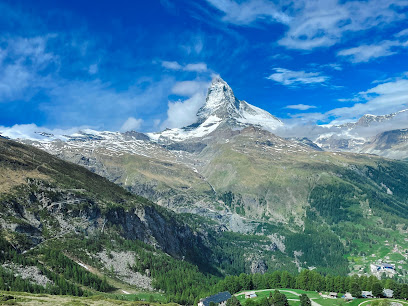
Matterhorn Glacier Paradise
Experience the stunning beauty and thrilling activities at Matterhorn Glacier Paradise, the highest cable car station in Europe, in the heart of the Swiss Alps.
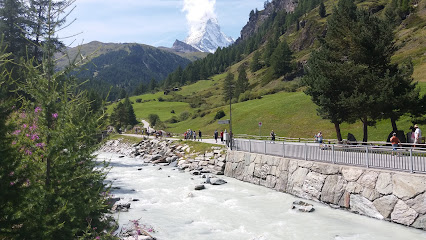
Sunnegga
Explore the breathtaking beauty of Sunnegga, an alpine paradise near Zermatt, Switzerland, offering stunning views and year-round outdoor activities.
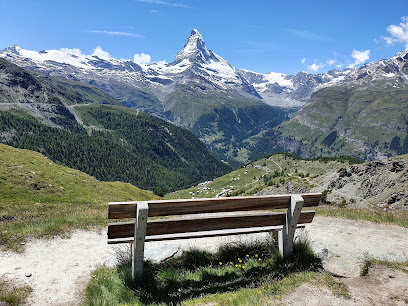
Matterhorn Museum - Zermatlantis
Discover the captivating history and culture of Zermatt at the Matterhorn Museum - Zermatlantis, where the iconic Matterhorn comes to life.
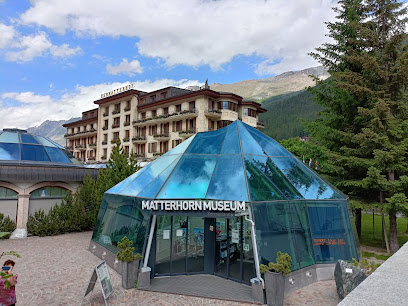
Kirchbrücke
Discover the breathtaking views and natural beauty at Kirchbrücke, the iconic bridge in Zermatt offering stunning scenery of the Swiss Alps.
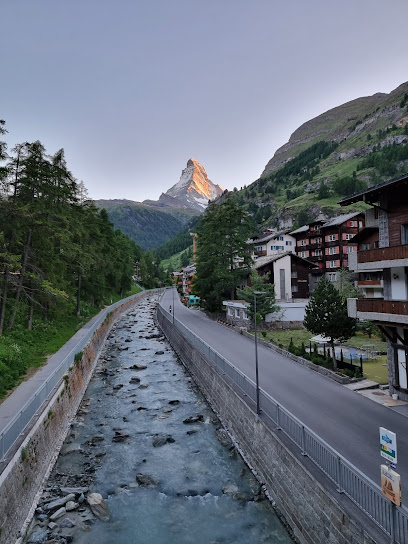
Gorner Gorge
Experience the breathtaking beauty of Gorner Gorge, a stunning natural preserve in Zermatt that showcases the majesty of the Swiss Alps.
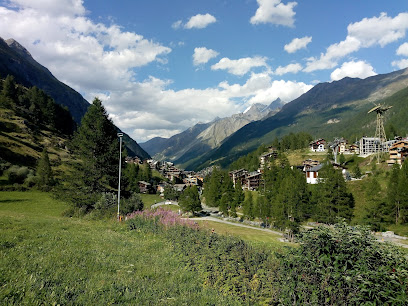
Gornergrat Observation Platform
Discover the breathtaking views of the Matterhorn and Swiss Alps from the Gornergrat Observation Platform, a must-visit destination in Zermatt.
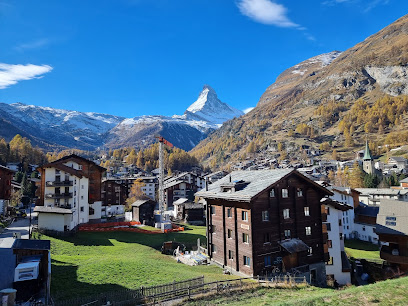
Brown Cow - pub
Experience the heart of Zermatt at Brown Cow, where great food, drinks, and a cozy atmosphere await every traveler.
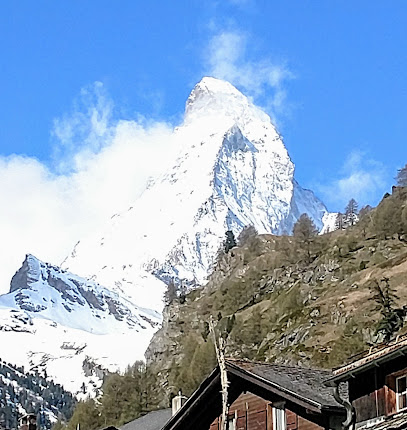
BEAUSiTE Zermatt
Discover the perfect blend of luxury and nature at BEAUSiTE Zermatt, your serene escape in the Swiss Alps.

Zermatt Matterhorn Viewpoint
Experience unforgettable views of the Matterhorn at Zermatt Matterhorn Viewpoint, a breathtaking scenic spot in the heart of the Swiss Alps.
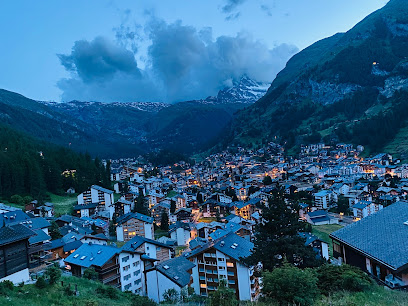
Mont Cervin Palace
Discover the luxurious Mont Cervin Palace in Zermatt, where elegance meets breathtaking views of the Matterhorn and exceptional service awaits.

Paragliding Zermatt | FLYBYPARA | Tandem Flights
Experience the thrill of tandem paragliding in Zermatt, soaring over stunning alpine landscapes and the iconic Matterhorn.
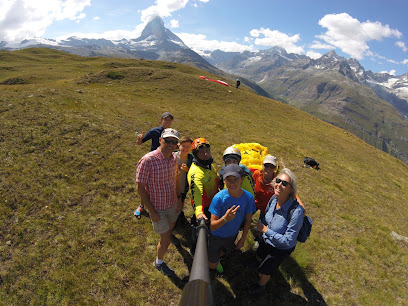
la couronne Hotel & Spa
Experience unparalleled luxury and wellness at La Couronne Hotel & Spa, your perfect retreat in the heart of Zermatt, surrounded by breathtaking Alpine views.
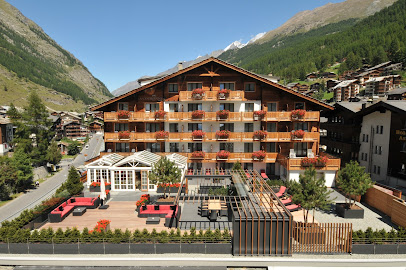
Forest Fun Park Zermatt
Discover the thrills of treetop adventures and zip-lining at Forest Fun Park Zermatt, surrounded by breathtaking Swiss Alpine beauty.
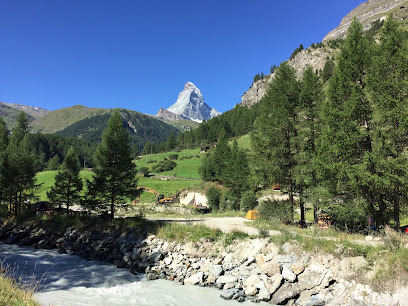
FlyZermatt Paragliding
Experience an unforgettable adventure with FlyZermatt Paragliding, soaring above the stunning Swiss Alps and taking in breathtaking views.

Unmissable attractions to see
Fort of Bard
Discover the historical marvel of Fort of Bard in Aosta Valley, where breathtaking views meet rich military heritage and cultural events.

Roman Theatre
Explore the Roman Theatre in Aosta, a stunning historical landmark that reflects the grandeur of ancient Rome amidst breathtaking alpine scenery.
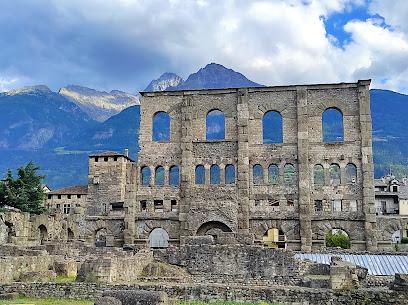
Gornergrat Railway
Discover Zermatt's breathtaking Gornergrat Railway, a historic journey through the Swiss Alps with stunning views of the Matterhorn and surrounding mountain peaks.
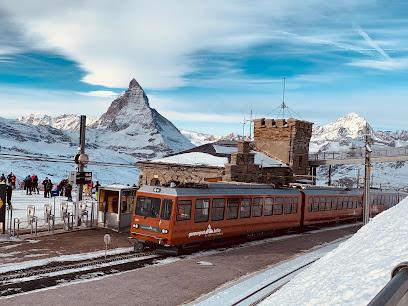
Sunnegga
Discover the breathtaking beauty and adventure at Sunnegga, the ultimate alpine destination near Zermatt, perfect for nature lovers and outdoor enthusiasts.

Criptoportico Forense
Explore the Criptoportico Forense, an ancient Roman archaeological site in Aosta, reflecting Italy's rich historical heritage.

Sacro Monte Calvario di Domodossola
Discover the stunning Sacro Monte Calvario di Domodossola, a UNESCO World Heritage Site blending nature and spirituality in Italy's breathtaking landscape.
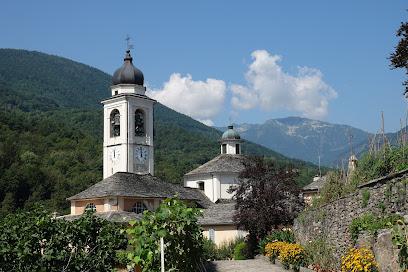
Château de Tourbillon
Explore the stunning Château de Tourbillon, a majestic castle in Sion, Switzerland, offering breathtaking views and a journey through history.
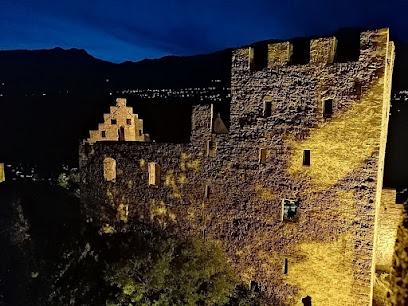
Matterhorn Museum - Zermatlantis
Explore the Matterhorn Museum - Zermatlantis in Zermatt for a deep dive into the region's rich history and alpine culture.
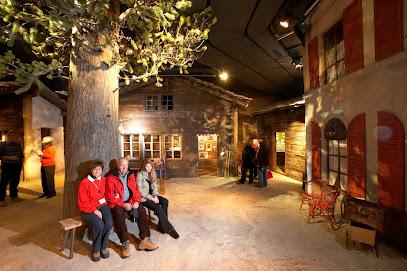
Kirchbrücke
Discover the breathtaking beauty of Kirchbrücke in Zermatt, a picturesque bridge offering stunning views of the Swiss Alps and a glimpse into local history.
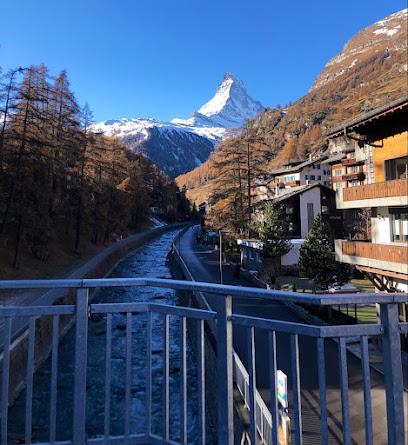
Aosta Cathedral
Explore the rich history and stunning architecture of Aosta Cathedral, a must-visit cultural gem in Aosta Valley, Italy.
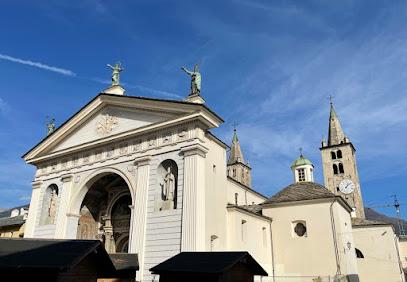
Croix-de-ville
Explore the enchanting Croix-de-Ville, a historical landmark in Aosta, Italy, where culture and beauty intertwine in the heart of the Aosta Valley.
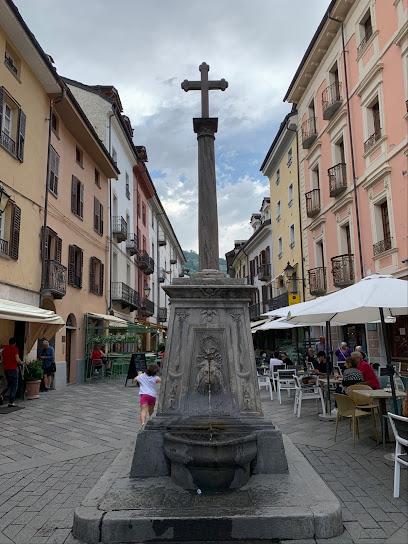
Chiesa Collegiata dei Santi Pietro e Orso
Discover the stunning architecture and rich history of Chiesa Collegiata dei Santi Pietro e Orso, a must-visit Catholic church in Aosta, Italy.
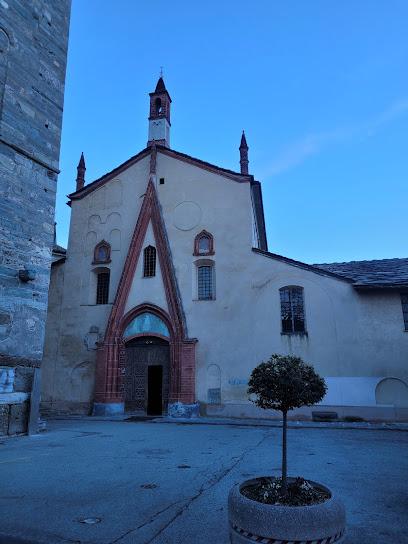
Gornergrat
Explore the breathtaking heights of Gornergrat in Zermatt, where stunning views of the Alps and the Matterhorn await.
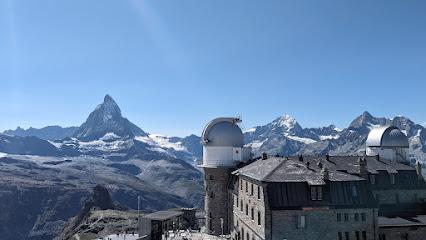
La Passerelle à Farinet
Discover La Passerelle à Farinet, a stunning footbridge in Saillon, Switzerland, offering breathtaking views and an unforgettable hiking experience.
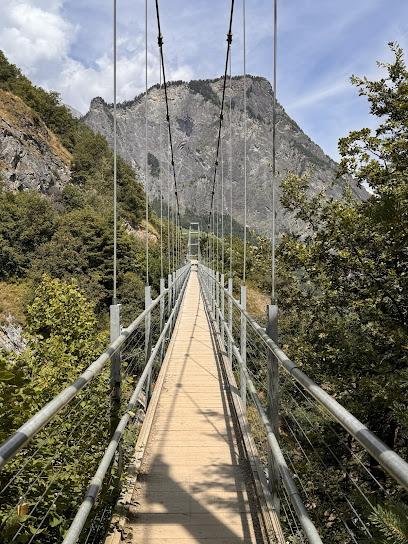
Pyramides d’Euseigne
Explore the breathtaking Pyramides d’Euseigne, a stunning natural attraction in the Swiss Alps, perfect for adventure seekers and nature lovers.
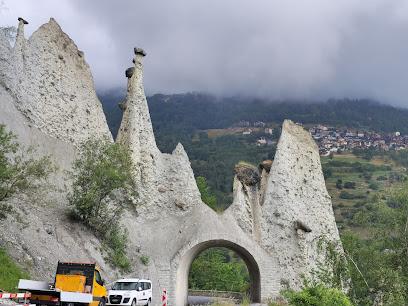
Essential places to dine
Pizzeria Ristorante Molino Zermatt
Discover authentic Italian cuisine at Pizzeria Ristorante Molino Zermatt, where delicious pizzas meet breathtaking alpine views.
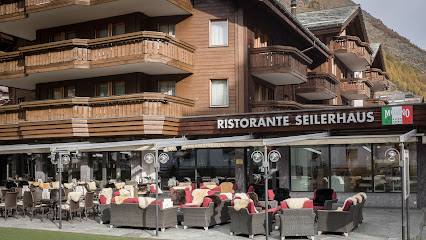
Walliserkanne
Experience authentic Swiss cuisine in Zermatt at Walliserkanne – where tradition meets breathtaking alpine views.
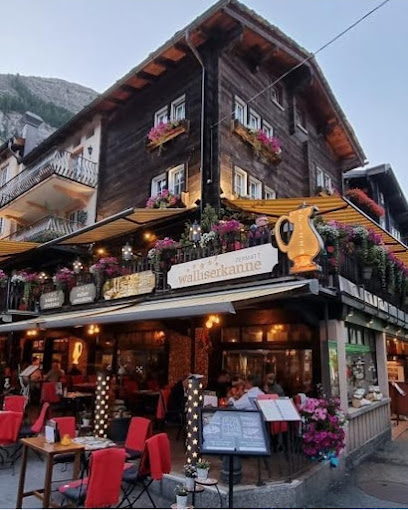
Chez Vrony
Experience exceptional Swiss cuisine with breathtaking views at Chez Vrony in Zermatt – where every meal is a celebration of flavor and scenery.
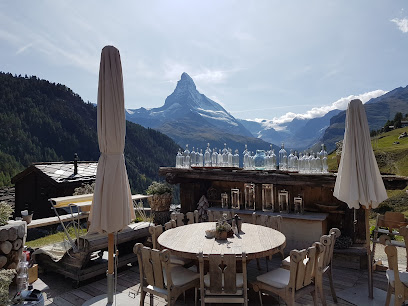
Grampi’s Bar & Restaurant
Experience the vibrant flavors of Italy at Grampi’s Bar & Restaurant in Zermatt – where every bite is a celebration!
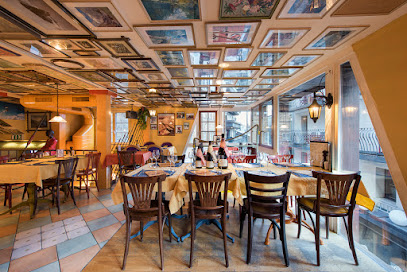
Restaurant GoldenIndia Zermatt
Experience authentic Indian flavors at Restaurant GoldenIndia in Zermatt - where every meal is a celebration of culinary tradition.
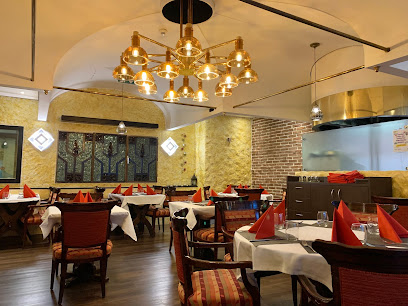
Restaurant Schäferstube
Experience authentic Swiss cuisine at Restaurant Schäferstube in Zermatt - where tradition meets breathtaking alpine views.
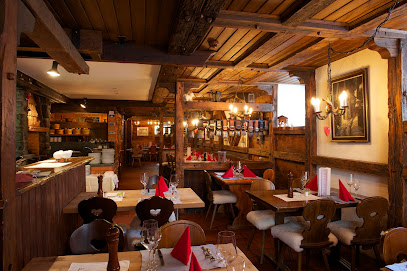
Bergrestaurant Blatten
Discover Bergrestaurant Blatten: A Cozy Swiss Dining Experience with Breathtaking Alpine Views in Zermatt.

Whymper-Stube
Experience authentic Swiss cuisine at Whymper-Stube in Zermatt—where tradition meets taste in a cozy Alpine setting.
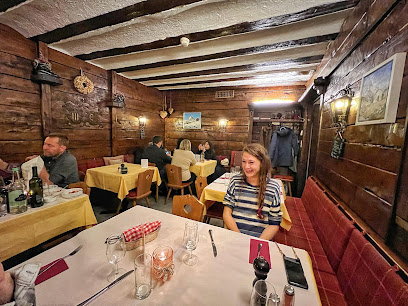
Petit Royal
Experience the cozy charm of Petit Royal - where exquisite chocolates meet artisanal coffee in the heart of Zermatt.
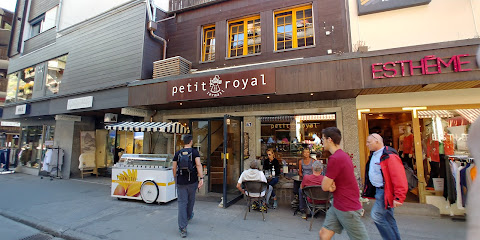
Restaurant Zum See
Experience authentic Swiss cuisine at Restaurant Zum See, where culinary excellence meets stunning alpine views in Zermatt.
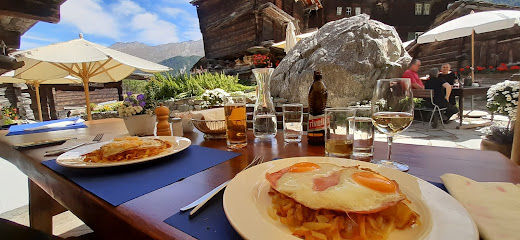
Restaurant Stadel
Experience authentic Swiss cuisine at Restaurant Stadel in Zermatt - where every dish tells a story of tradition and flavor.
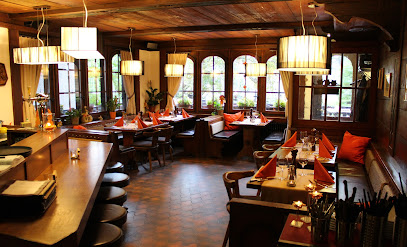
THE OMNIA
Discover luxury dining and accommodation at The Omnia in Zermatt—where stunning views meet culinary excellence amidst the Swiss Alps.
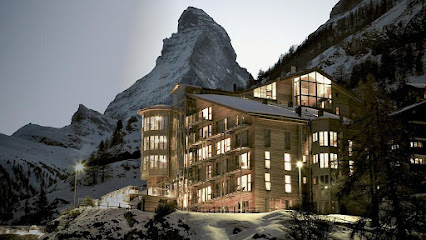
Spycher
Discover authentic Swiss flavors at Spycher in Zermatt - where culinary excellence meets breathtaking alpine views.
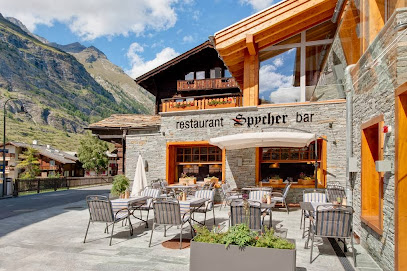
Findlerhof
Discover authentic Swiss cuisine at Findlerhof, where stunning alpine views meet delectable local dishes in Zermatt's charming Findeln area.
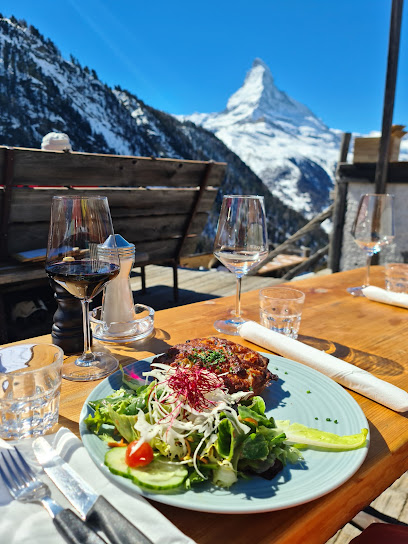
@Paradise
Experience authentic Swiss cuisine at @Paradise in Zermatt's idyllic Findeln region surrounded by breathtaking mountain views.
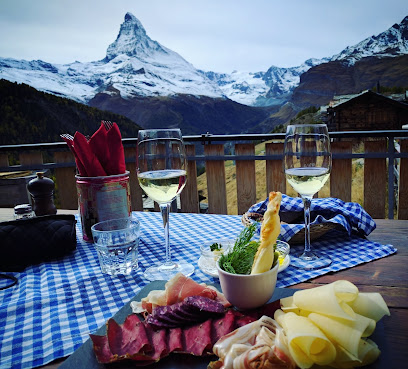
Markets, malls and hidden boutiques
Lindt Chocolate Shop Zermatt
Discover the finest Swiss chocolates at Lindt Chocolate Shop Zermatt, a paradise for chocolate lovers in the heart of the Swiss Alps.

Läderach Chocolate Store
Discover the art of Swiss chocolate at Läderach Chocolate Store, where every bite is a decadent experience you won't forget.
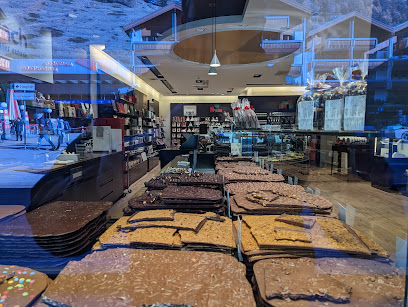
Bayard Sports & Fashion
Discover premium sporting goods and fashion apparel at Bayard Sports & Fashion, your go-to shop for outdoor adventures in Zermatt.
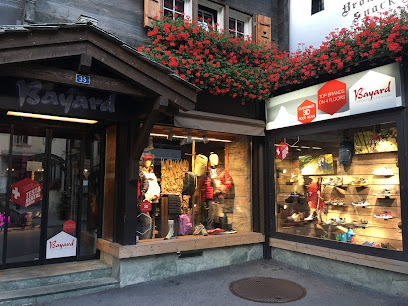
Olmo Zermatt
Discover unique bags and stylish shoes at Olmo Zermatt, your must-visit clothing shop in the heart of the stunning alpine village.
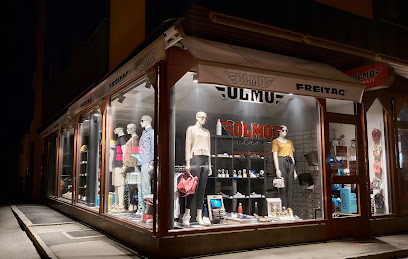
Mountain Shop Zermatt
Explore the Swiss Alps with top-notch outdoor gear from Mountain Shop Zermatt – your one-stop destination for adventure essentials.
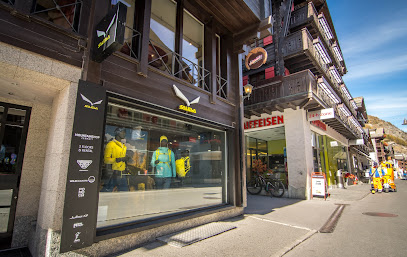
CALIDA Store
Explore high-quality underwear and stylish clothing for all ages at CALIDA Store in Zermatt, your go-to fashion destination in the Swiss Alps.
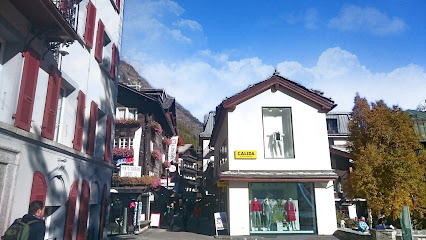
The North Face Store
The North Face Store in Zermatt: Your ultimate destination for high-quality outdoor apparel and gear amidst the stunning Swiss Alps.
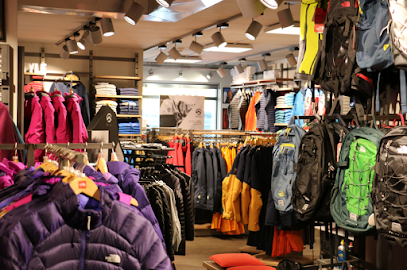
MAISON DAVIS - Concept Store & Art Gallery
Explore MAISON DAVIS in Zermatt for a captivating blend of art, unique jewelry, and exclusive games in a charming concept store.
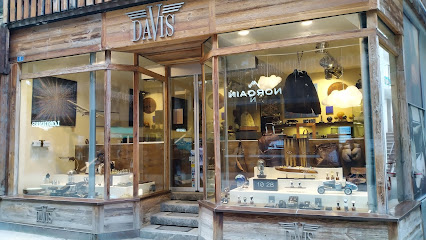
TISSOT Zermatt Store
Discover elegance and precision at the TISSOT Zermatt Store, your destination for exquisite Swiss watches in the heart of the Swiss Alps.
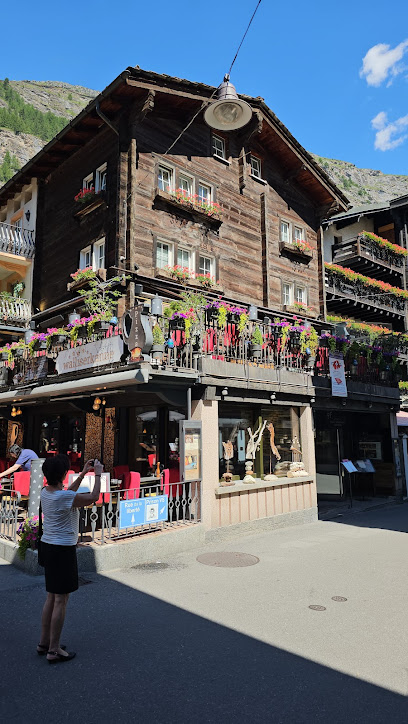
Hamilton x Air Zermatt Store
Discover aviation treasures and stunning views at Hamilton x Air Zermatt Store, the perfect stop for aviation lovers and souvenir seekers in Zermatt.
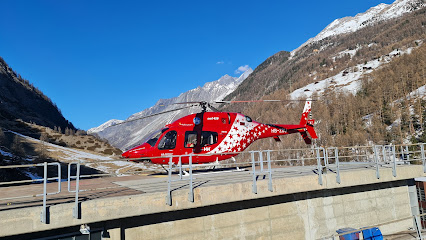
Hublot Zermatt Boutique
Explore the luxurious Hublot Zermatt Boutique, showcasing exquisite Swiss watches against the stunning backdrop of the Swiss Alps.
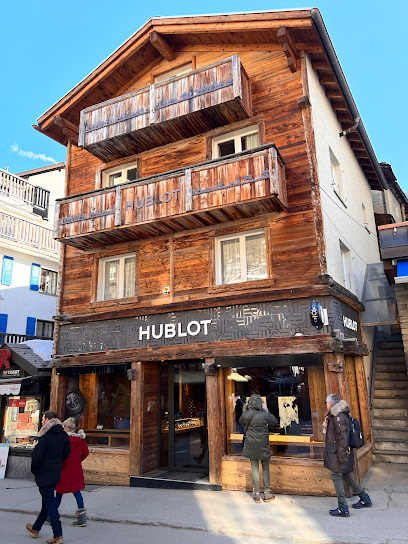
Millet Zermatt
Explore the best outdoor gear at Millet Zermatt, the ultimate destination for mountain enthusiasts and fashion-forward adventurers alike.
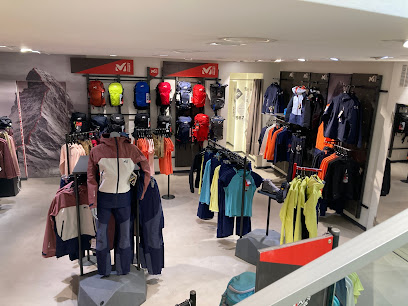
OMEGA Boutique - Zermatt
Explore the luxurious world of OMEGA in Zermatt, where precision meets elegance in a breathtaking alpine setting.
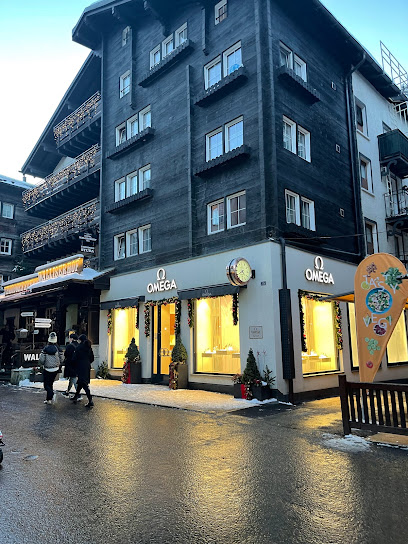
Matterland Souvenirs
Discover a world of unique Swiss gifts at Matterland Souvenirs in Zermatt - your ultimate stop for memorable keepsakes and local treasures.

Peak Performance General Store Zermatt
Elevate your outdoor experience in Zermatt with top-notch gear and stylish apparel at Peak Performance General Store.

Essential bars & hidden hideouts
Brown Cow - pub
Discover the vibrant Brown Cow Pub in Zermatt, where delicious food and a lively atmosphere await after your alpine adventures.
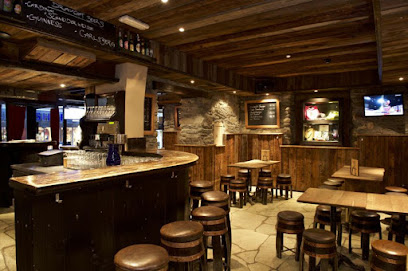
Alex Lounge Bar & Fumoir
Experience the warmth and elegance of Alex Lounge Bar & Fumoir in Zermatt, where alpine charm meets exquisite cocktails.
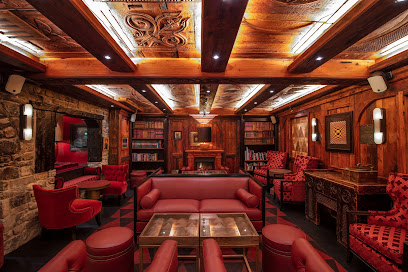
Snowboat
Experience the vibrant nightlife of Zermatt at Snowboat, where expertly crafted cocktails meet stunning alpine views.
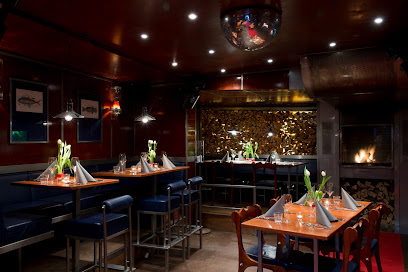
Hexenbar
Experience the enchanting charm of Hexenbar in Zermatt, offering themed drinks and a vibrant atmosphere perfect for unwinding after exploring the Swiss Alps.
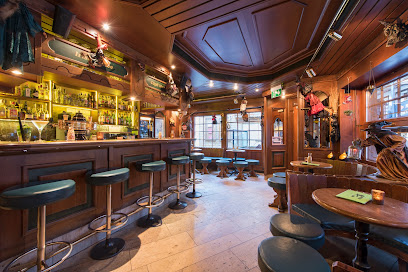
Papperla Pub
Experience the lively ambiance of Papperla Pub in Zermatt, where delicious bistro fare meets an energetic nightlife atmosphere.
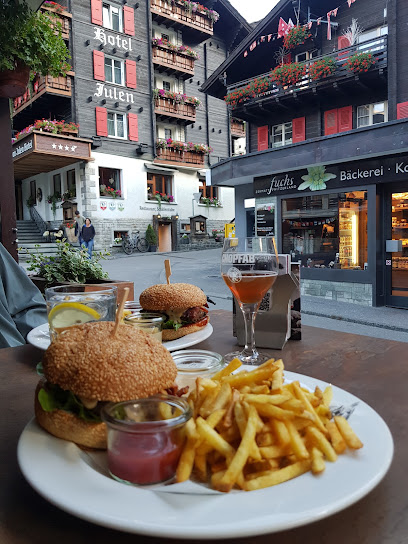
Bar 55
Experience the perfect blend of relaxation and vibrant atmosphere at Bar 55, Zermatt's top lounge destination for locals and tourists alike.
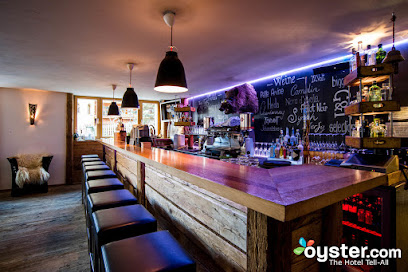
Grizzly's Bar & Bistro
Experience the warmth and flavors of Swiss cuisine at Grizzly's Bar & Bistro, a cozy gastropub in the heart of Zermatt with stunning Matterhorn views.
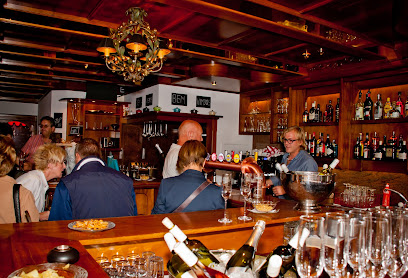
Alpenhof Bar & Cigar Lounge
Discover the allure of Alpenhof Bar & Cigar Lounge in Zermatt, where fine wines, premium cigars, and live piano music create an unforgettable experience.
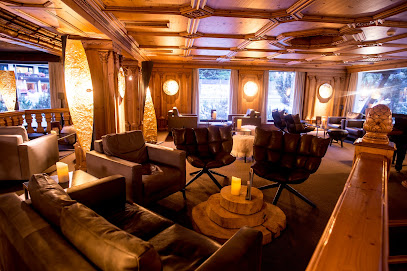
Little Bar
Experience the cozy charm of Little Bar in Zermatt, where delightful drinks and a friendly atmosphere await your arrival.
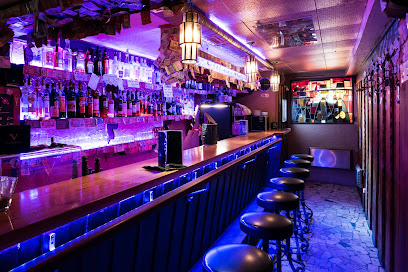
z'alt Hischi Bar-Pub-Restaurant
Discover the vibrant taste of Zermatt at z'alt Hischi Bar-Pub-Restaurant, where traditional Swiss flavors meet modern gastropub flair in a cozy setting.
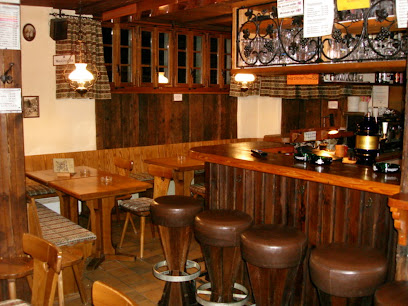
Chämi Bar Fire Place
Experience the warmth of Chämi Bar Fire Place in Zermatt, where cozy vibes meet a wide selection of cocktails, beers, and wines.
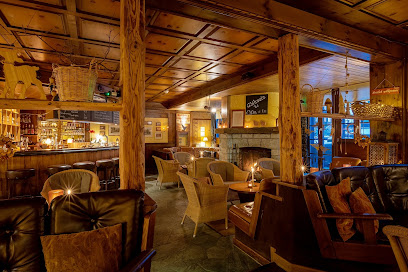
Streetside Bar
Discover the vibrant Streetside Bar in Zermatt, where delicious tapas, live music, and a cozy atmosphere await every traveler.
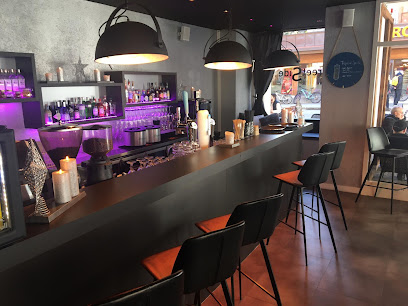
Champagne Bar
Experience the elegance of fine champagne in Zermatt's charming bar, offering a luxurious ambiance and breathtaking Alpine views.
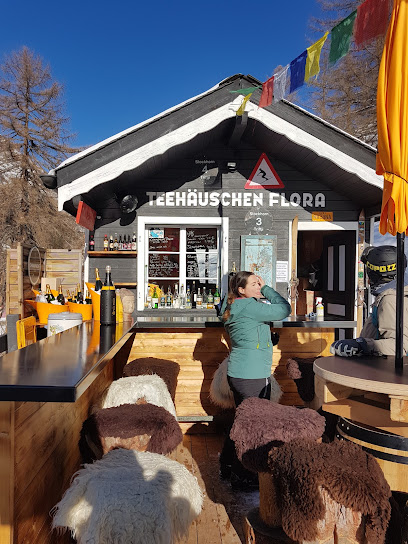
Sansi's Bar @hotelalbanareal
Discover the cozy charm of Sansi's Bar in Zermatt, where delightful drinks and a warm atmosphere await you after a day in the Alps.
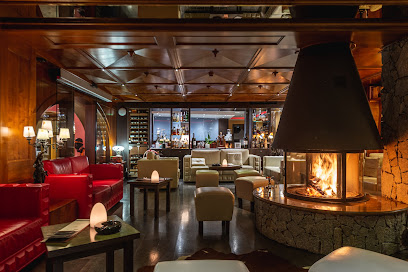
Bar 22 Zermatt
Discover Bar 22 in Zermatt, where cozy alpine charm meets a vibrant selection of drinks and delightful bites amidst stunning mountain views.
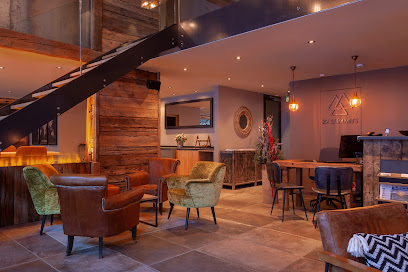
Travel experiences inspired by this city
Explore more travel diariesLocal Phrases
-
- HelloGrüezi
[gru-e-tsi] - GoodbyeUf Wiederluege
[oof vee-der-loo-ge] - YesJa
[yah] - NoNei
[nigh] - Please/You're welcomeBitte
[bit-te] - Thank youMerci
[mer-see] - Excuse me/SorryEntschuldigung
[ent-shool-dee-goong] - How are you?Wie goots?
[vee gohts] - Fine. And you?Guet. Und dir?
[gweet. oont deer] - Do you speak English?Rede Sie Inglish?
[ray-dee zee ing-lish] - I don't understandIch verstah nöd
[eech fair-shtah nerd]
- HelloGrüezi
-
- I'd like to see the menu, pleaseIch möchte bitte die Speisekarte sehen
[eech merkhteh bit-te dee shp-eye-zeh-kahr-teh zay-en] - I don't eat meatIch esse kein Fleisch
[eech ess-eh kine fly-sh] - Cheers!Prost!
[prohst] - I would like to pay, pleaseIch möchte bitte bezahlen
[eech merkhteh bit-te beh-tzah-len]
- I'd like to see the menu, pleaseIch möchte bitte die Speisekarte sehen
-
- Help!Hilfe!
[hil-feh] - Go away!Geh weg!
[gay vegg] - Call the Police!Rufen Sie die Polizei!
[roo-fen zee dee po-lee-tsy] - Call a doctor!Rufen Sie einen Arzt!
[roo-fen zee ine-en ahrts] - I'm lostIch habe mich verirrt
[eech hah-beh meesh fair-irt] - I'm illIch bin krank
[eech been krank]
- Help!Hilfe!
-
- I'd like to buy...Ich möchte ... kaufen
[eech merkhteh ... kow-fen] - I'm just lookingIch schau mich nur um
[eech show meesh noor oom] - How much is it?Wie viel kostet das?
[vee feel kaws-tet duss] - That's too expensiveDas ist zu teuer
[duss ist tsoo toy-er] - Can you lower the price?Können Sie den Preis senken?
[kern-en zee den prize zain-ken]
- I'd like to buy...Ich möchte ... kaufen
-
- What time is it?Wie spät ist es?
[vee shpet ist es] - It's one o'clockEs ist ein Uhr
[es ist iyn oor] - Half past (10)Halb elf
[halb elf] - MorningMorga
[mor-ga] - AfternoonNamitag
[na-mee-tahg] - EveningAbig
[ah-bi-g] - YesterdayGestern
[ge-shtern] - TodayHüt
[hoot] - TomorrowMorn
[morn] - 1eins
[iyns] - 2zwei
[tsvay] - 3drei
[dry] - 4vier
[feer] - 5fünf
[fuhnf] - 6sechs
[zeks] - 7sieben
[zee-ben] - 8acht
[ahkt] - 9neun
[noyn] - 10zehn
[tsayn]
- What time is it?Wie spät ist es?
-
- Where's a/the...?Wo ist ein/der...?
[voh ist iyn/dehr] - What's the address?Was ist die Adresse?
[vahs ist dee ah-dreh-suh] - Can you show me (on the map)?Können Sie mir (auf der Karte) zeigen?
[kern-en zee meer (owf dehr kahr-teh) tsee-gen] - When's the next (bus)?Wann kommt der nächste (Bus)?
[vahn kohmt dehr nayk-stuh (boos)] - A ticket (to ....)Ein Billett (nach ...)
[ine bi-let (nahkh ...)]
- Where's a/the...?Wo ist ein/der...?
History of Zermatt
-
Zermatt's history dates back to the early settlers of the upper Valais region. The first recorded mention of Zermatt was in 1280 under the name 'Pratobornum'. The village's remote location and challenging terrain fostered a unique alpine culture centered around farming, cheese-making, and mountaineering.
-
One of the most significant events in Zermatt's history occurred on July 14, 1865, when Edward Whymper and his team successfully made the first ascent of the Matterhorn. This achievement brought international fame to Zermatt and marked the beginning of the golden age of alpinism. The climb, however, ended in tragedy as four members of the team fell to their deaths during the descent.
-
Following the Matterhorn's first ascent, Zermatt rapidly developed into a major tourist destination. The construction of the Visp-Zermatt railway in 1891 significantly improved access to the area, making it easier for visitors to explore the scenic beauty and engage in mountaineering activities. The opening of grand hotels, such as the Mont Cervin Palace in 1852, further established Zermatt as a premier alpine resort.
-
In the early 20th century, Zermatt embraced the burgeoning sport of skiing. The installation of the Gornergrat Railway in 1898 and subsequent development of ski lifts and cable cars transformed Zermatt into a haven for winter sports enthusiasts. The high-altitude terrain and reliable snowfall made it an ideal destination for both recreational skiing and alpine racing.
-
In 1961, a tragic event cast a shadow over Zermatt's history. On August 3, a US Air Force C-130 Hercules aircraft crashed into the Matterhorn, killing all 20 passengers and crew on board. The incident highlighted the challenges and dangers of navigating the high-altitude environment and remains a somber chapter in Zermatt's history.
-
Zermatt has long been committed to preserving its natural environment. In 1945, the establishment of the Zermatt-Matterhorn area as a car-free zone was a pioneering step towards sustainable tourism. The region's dedication to environmental conservation is evident in its extensive network of hiking trails, protected wildlife areas, and ongoing initiatives to reduce carbon emissions and promote eco-friendly practices.
-
Zermatt's rich cultural heritage is celebrated through various festivals and traditions. The annual Zermatt Unplugged music festival, established in 2007, attracts artists and visitors from around the world. Traditional events like the Folklore Festival and the Swiss National Day celebrations showcase local customs, including yodeling, alphorn playing, and traditional dances, offering a glimpse into the vibrant cultural life of the region.
Zermatt Essentials
-
Zermatt is located in the Valais canton of Switzerland. The nearest major airport is Zurich Airport, around 3.5 hours away by train. Another option is Geneva Airport, which is approximately 4 hours by train. From either airport, you can take a train to Visp and then transfer to the Matterhorn Gotthard Bahn for the scenic journey to Zermatt. Note that Zermatt is a car-free village, and private vehicles are not allowed. If you are driving, you can park your car in the village of Täsch and take a shuttle train or taxi the remaining 5 kilometers to Zermatt.
-
Zermatt is a car-free village, so the primary modes of transportation within the village are walking, electric taxis, and bicycles. The local eBus network provides convenient transport within the village and to nearby attractions. For exploring the mountains, the Gornergrat Railway, Matterhorn Glacier Paradise cable cars, and Sunnegga funicular are essential. These services offer breathtaking views and access to the region's hiking and skiing areas.
-
The official currency in Switzerland is the Swiss Franc (CHF). Credit and debit cards are widely accepted in Zermatt, including in hotels, restaurants, and shops. ATMs are available throughout the village for cash withdrawals. It's advisable to carry some cash for smaller establishments or in case of technical issues with card payments.
-
Zermatt is generally a very safe destination for tourists. Violent crime is rare, and the village has a low crime rate. However, like any popular tourist destination, pickpocketing can occur, especially in crowded places. Always keep an eye on your belongings and be cautious in busy areas. There are no specific high-crime areas targeting tourists in Zermatt.
-
In case of an emergency, dial 112 for immediate assistance. Zermatt has a local police station and a medical center, the Zermatt Matterhorn Medical Center, which can handle most health emergencies. For more serious medical issues, the hospital in Visp is the nearest major medical facility. It is strongly recommended to have travel insurance that covers medical emergencies and mountain rescue services.
-
Fashion: Do dress in layers and wear appropriate mountain gear when hiking or skiing. Avoid flashy or overly casual attire in upscale restaurants. Religion: Do respect local customs and traditions. Churches are open for visitors, but dress modestly inside. Public Transport: Do be punctual and validate your tickets before traveling. Don’t make loud noises or eat on public transport. Greetings: Do greet people with a friendly 'Grüezi' (hello in Swiss German). A handshake is customary. Eating & Drinking: Do try local specialties like raclette and fondue. Don’t refuse an offer to join in these communal meals, as it is considered impolite.
-
To experience Zermatt like a local, visit during the shoulder seasons (late spring or early autumn) when the village is less crowded but equally beautiful. Shop for groceries and local produce at the Coop or Migros supermarkets. For a unique experience, take an early morning walk to see the sunrise over the Matterhorn from the Gornergrat. Engage with locals at the village’s smaller, family-run restaurants and cafés. Don't miss the weekly farmers' market, where you can buy fresh, regional products and handmade crafts.
Trending Landmark in Zermatt
-
Gornergrat Railway
-
Matterhorn Glacier Paradise
-
Sunnegga
-
Matterhorn Museum - Zermatlantis
-
Kirchbrücke
-
Gorner Gorge
-
Gornergrat Observation Platform
-
Brown Cow - pub
-
BEAUSiTE Zermatt
-
Zermatt Matterhorn Viewpoint
-
Mont Cervin Palace
-
Paragliding Zermatt | FLYBYPARA | Tandem Flights
-
la couronne Hotel & Spa
-
Forest Fun Park Zermatt
-
FlyZermatt Paragliding
Nearby Cities to Zermatt
-
Things To Do in Murren
-
Things To Do in Grindelwald
-
Things To Do in Interlaken
-
Things To Do in Montreux
-
Things To Do in Ascona
-
Things To Do in Locarno
-
Things To Do in Thun
-
Things To Do in Vevey
-
Things To Do in Lugano
-
Things To Do in Lausanne
-
Things To Do in Bern
-
Things To Do in Turin
-
Things To Do in Lucerne
-
Things To Do in Geneva
-
Things To Do in Annecy















